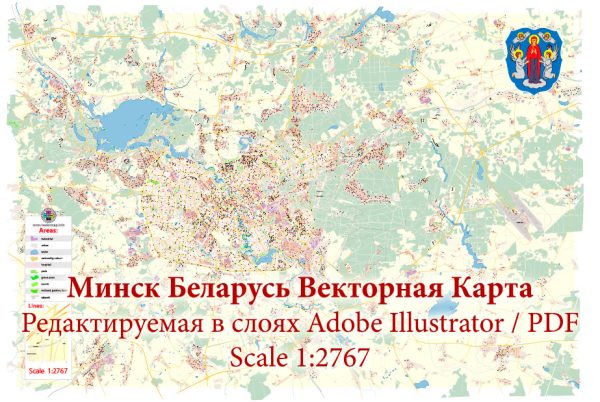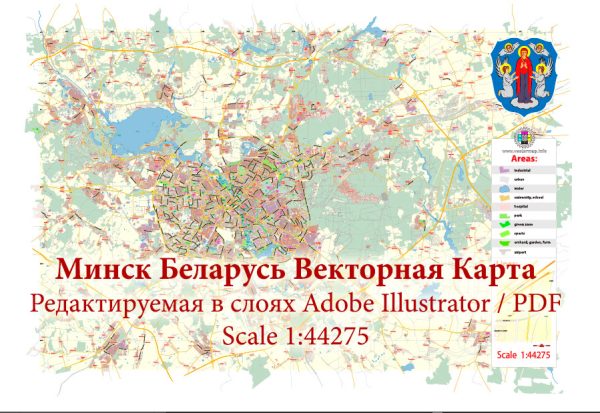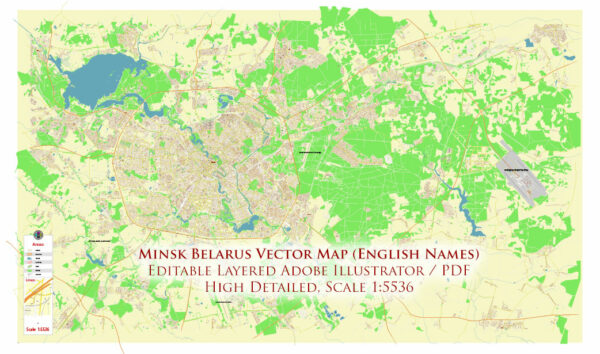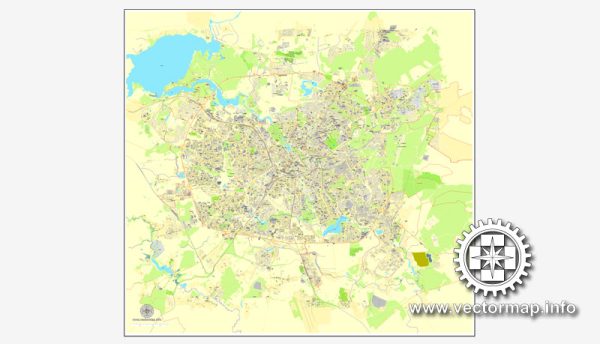Some information on the history and transportation infrastructure of Minsk, Belarus up to that point.
Vectormap.Net provide you with the most accurate and up-to-date vector maps in Adobe Illustrator, PDF and other formats, designed for editing and printing. Please read the vector map descriptions carefully.
History of Minsk:
Early History:
- Minsk has a rich history that dates back to the 11th century when it was first mentioned in historical records.
- Over the centuries, it experienced various rulerships, including Lithuanian, Polish, Russian, and Soviet control.
World War II:
- Minsk played a significant role during World War II. It was occupied by German forces during the war, and the city witnessed intense fighting during the Battle of Minsk in 1941.
- The city suffered substantial damage, and a large part of its Jewish population was tragically exterminated during the Holocaust.
Soviet Era:
- After the war, Minsk was rebuilt under Soviet rule. The city became the capital of the Belarusian Soviet Socialist Republic within the Soviet Union.
- During this period, Minsk underwent urbanization and industrialization, transforming into a major industrial and cultural center.
Post-Soviet Independence:
- After the dissolution of the Soviet Union in 1991, Belarus gained independence, and Minsk continued to serve as the capital of the newly formed Republic of Belarus.
- The city experienced economic and political changes, aligning itself with the Soviet past while also seeking to establish its own identity.
Transportation Infrastructure:
Public Transportation:
- Minsk has a well-developed public transportation system, including buses, trolleybuses, and the Minsk Metro.
- The Minsk Metro, opened in 1984, consists of two lines and serves as a quick and efficient means of transportation within the city.
Roads and Highways:
- The road network in Minsk is extensive, connecting the city to various regions of Belarus and neighboring countries.
- The Minsk Beltway (MKAD) is a major ring road encircling the city, facilitating smoother traffic flow.
Railway:
- Minsk is a crucial railway hub in Belarus, with numerous railway lines converging in the city. The Central Railway Station is a key transportation hub for both domestic and international train services.
Airport:
- Minsk National Airport (formerly known as Minsk-2) is the main international airport serving the city.
- The airport connects Minsk to numerous destinations in Europe, Asia, and other parts of the world.
Future Developments:
- Belarus has shown interest in further developing its transportation infrastructure, including modernizing existing roads, expanding public transportation options, and exploring high-speed rail projects.





 Author: Kirill Shrayber, Ph.D.
Author: Kirill Shrayber, Ph.D.